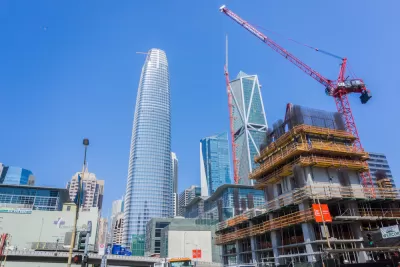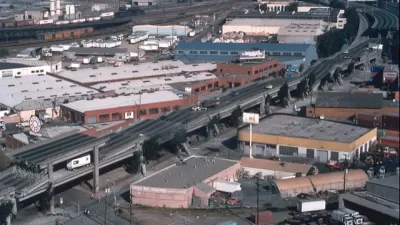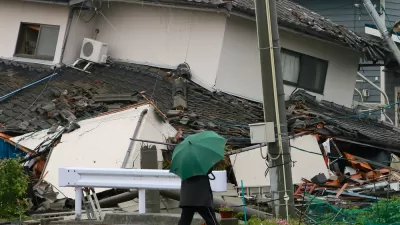The city has proposed tighter rules for new construction and a more active approach to securing existing tall structures from collapse.

Seismic activity has spooked San Francisco officials, who are now calling for stricter retrofitting measures, Rong-Gong Lin II writes. "First, a centerpiece of San Francisco's new downtown, the 58-story Millennium Tower, started sinking and tilting. Then last week, the city's new $2.26 billion transbay bus station was abruptly shut after cracks were found in two steel beams."
The city has released a list of over 150 tall buildings, including many constructed prior to modern seismic codes, as a prelude to assessing their need for retrofits. "The inventory comes with a sweeping proposal to more closely examine the city's skyline with an eye of making costly fixes to towers that could collapse amid major shaking. Officials are also calling for rules for new construction, aimed at preventing sinking of buildings as well as making tall buildings even stronger to resist wobbling in an earthquake."
These calls, Lin says, represent heightened rhetoric from several months ago, "when officials emphasized the difficulty in identifying the city's largest vulnerable buildings, such as those made of brittle concrete." Extant city laws, Lin continues, have not been particularly effective in requiring or spurring retrofits. "Current city law does require a seismic retrofit when two-thirds of a building's floors are renovated. But that almost never happens to tall buildings, when only a small fraction of the building undergoes construction at any given time."
FULL STORY: San Francisco Takes Unprecedented Step to Protect High Rises During Earthquakes

Alabama: Trump Terminates Settlements for Black Communities Harmed By Raw Sewage
Trump deemed the landmark civil rights agreement “illegal DEI and environmental justice policy.”

Study: Maui’s Plan to Convert Vacation Rentals to Long-Term Housing Could Cause Nearly $1 Billion Economic Loss
The plan would reduce visitor accommodation by 25% resulting in 1,900 jobs lost.

Why Should We Subsidize Public Transportation?
Many public transit agencies face financial stress due to rising costs, declining fare revenue, and declining subsidies. Transit advocates must provide a strong business case for increasing public transit funding.

Wind Energy on the Rise Despite Federal Policy Reversal
The Trump administration is revoking federal support for renewable energy, but demand for new projects continues unabated.

Passengers Flock to Caltrain After Electrification
The new electric trains are running faster and more reliably, leading to strong ridership growth on the Bay Area rail system.

Texas Churches Rally Behind ‘Yes in God’s Back Yard’ Legislation
Religious leaders want the state to reduce zoning regulations to streamline leasing church-owned land to housing developers.
Urban Design for Planners 1: Software Tools
This six-course series explores essential urban design concepts using open source software and equips planners with the tools they need to participate fully in the urban design process.
Planning for Universal Design
Learn the tools for implementing Universal Design in planning regulations.
Caltrans
Smith Gee Studio
Institute for Housing and Urban Development Studies (IHS)
City of Grandview
Harvard GSD Executive Education
Toledo-Lucas County Plan Commissions
Salt Lake City
NYU Wagner Graduate School of Public Service




























